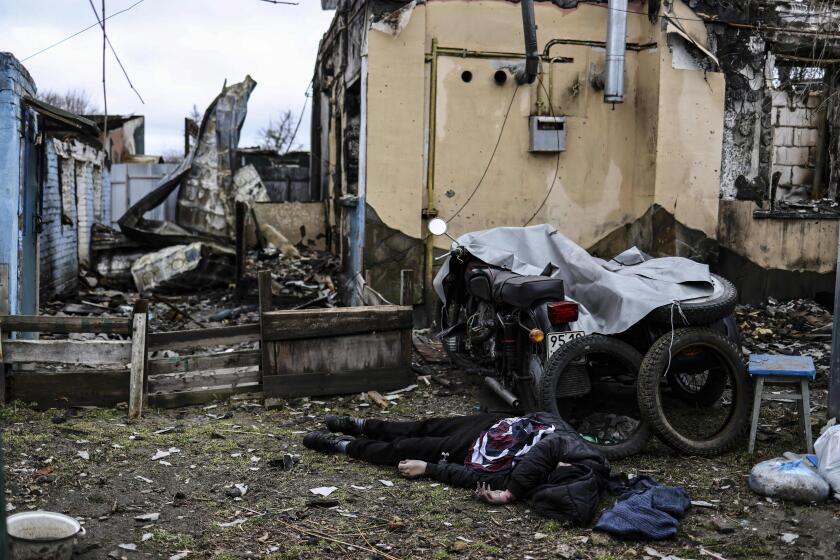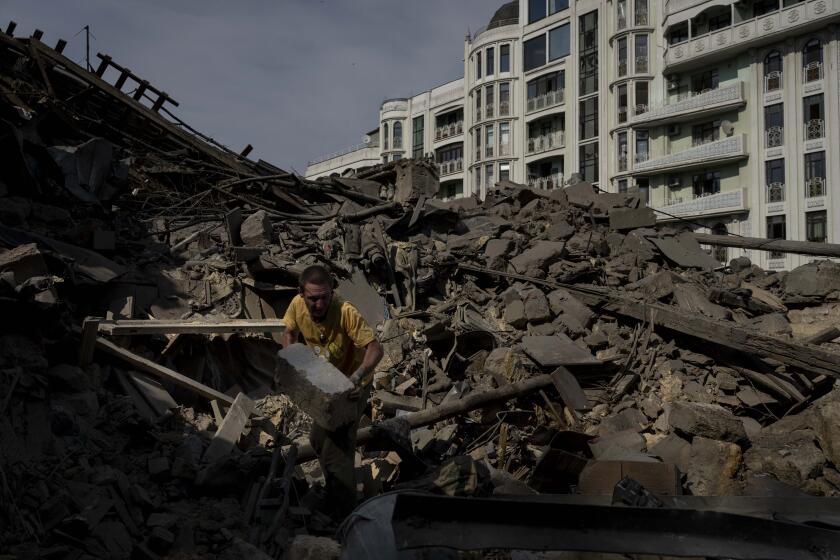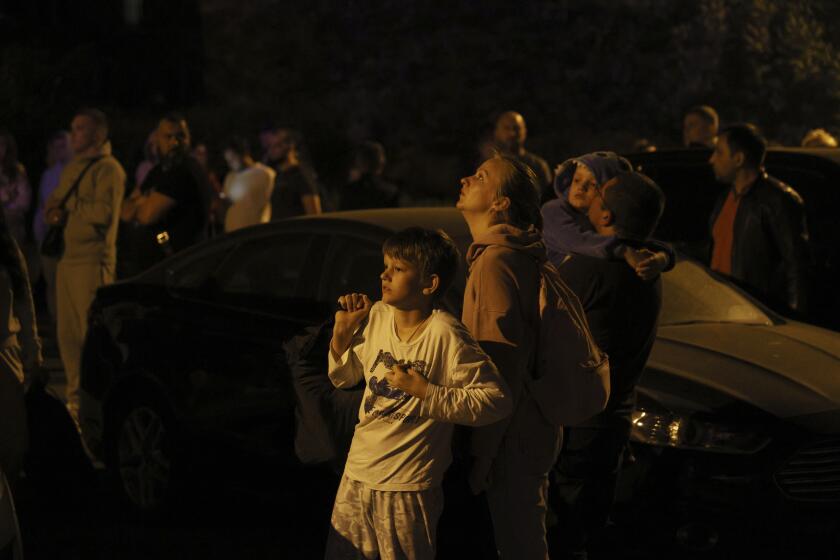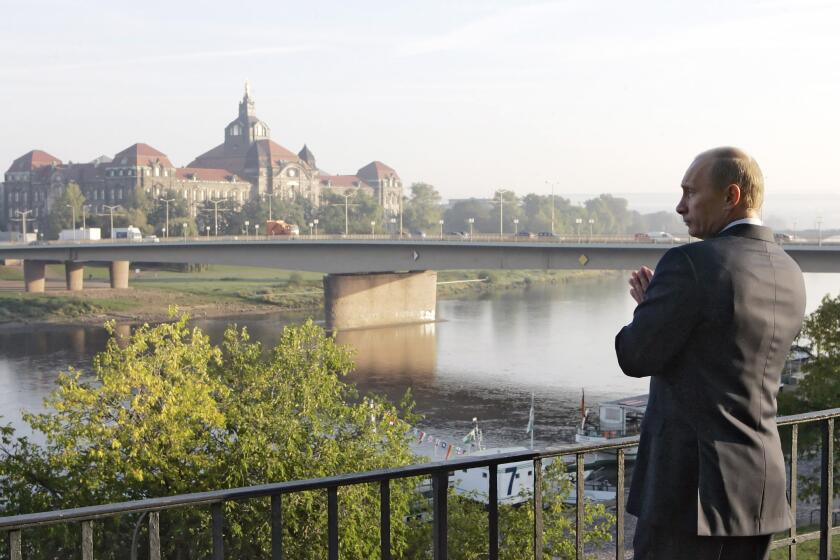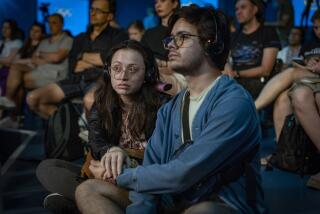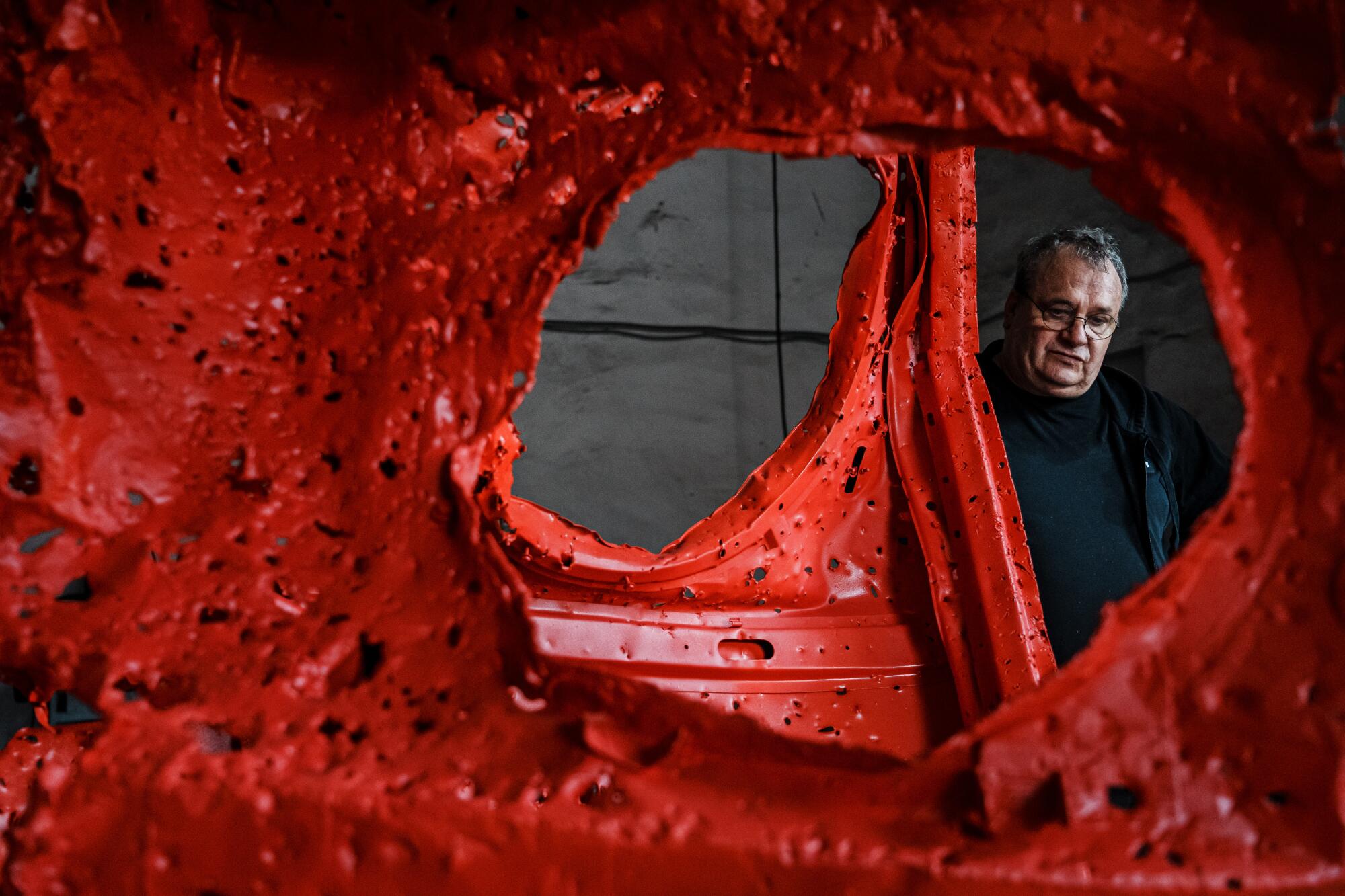
ODESA, Ukraine ‚ÄĒ Ukraine‚Äôs best-known sculptor, Mikhail Reva, was once famous for his whimsical works ‚ÄĒ playful, outsized creations found in parks and plazas across the country, and scattered throughout his southern hometown of Odesa.
Russia’s war on Ukraine changed all that.
His genial features obscured behind a welder’s mask, the 63-year-old sculptor gestures toward an industrial workbench bearing the day’s dark materials: jagged missile fragments, dented shell casings, twisted hunks of shrapnel, ready to be assembled into towering, talismanic works that reflect a world upended.
‚ÄúFor me, it‚Äôs like putting together a giant jigsaw puzzle, a puzzle made up of horror and chaos,‚ÄĚ he said. ‚ÄúThat is the life of this war ‚ÄĒ what our lives have become.‚ÄĚ
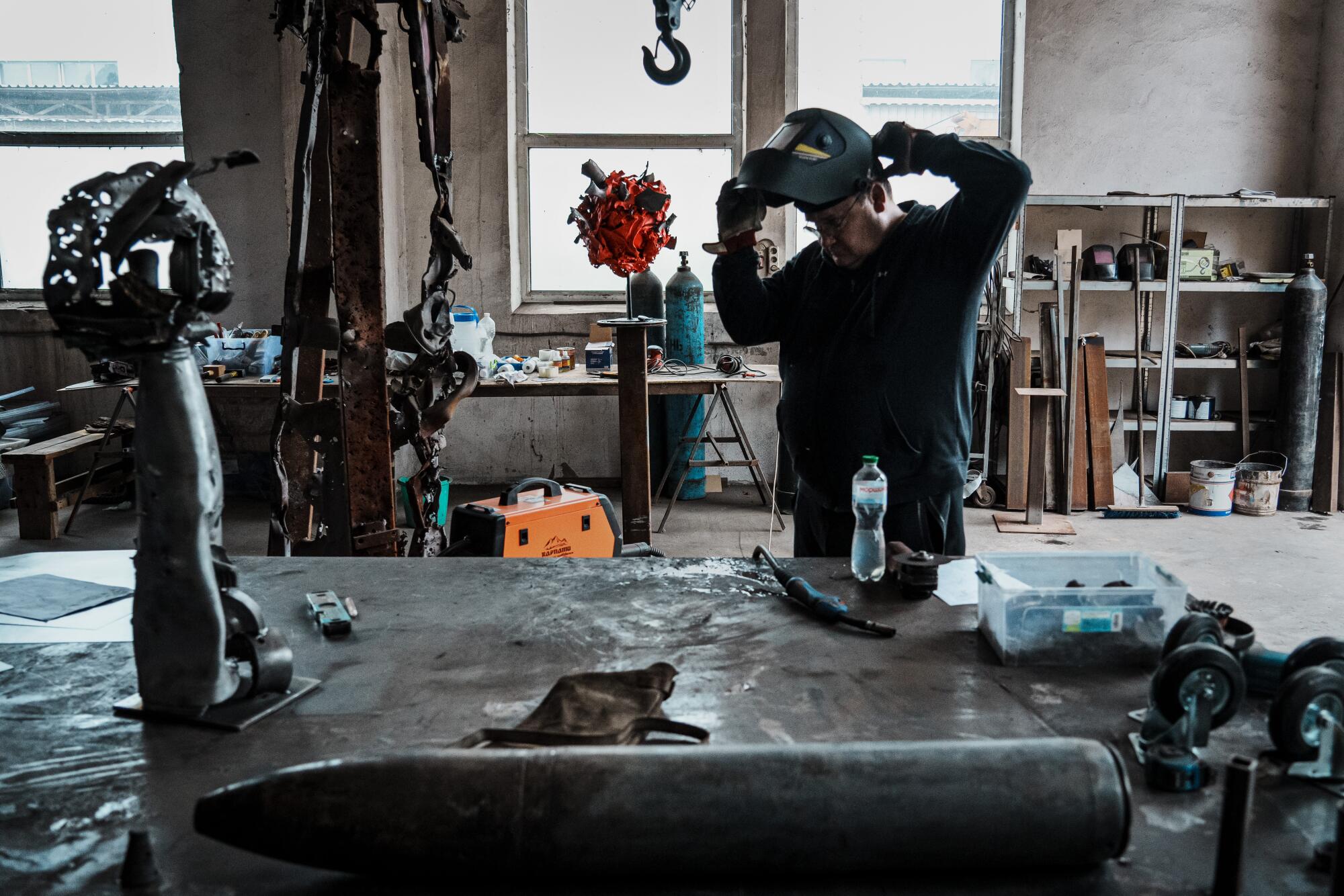
In his cavernous workshop near the shores of the Black Sea, and in an immaculate studio and display space in downtown Odesa, the fight is never far from view: here, a fearsome dragon-like figure fashioned from the shattered roof of a Russian military vehicle; there, the slashing wings of a colossal owl conjured from misshapen mortar fins. A starburst of metal depicts an explosion, but its title, ‚ÄúBlossom,‚ÄĚ serves as a bleak reminder that war‚Äôs violence can grotesquely echo nature‚Äôs beauty.
‚ÄėFor me, it‚Äôs like putting together a giant jigsaw puzzle, a puzzle made up of horror and chaos‚Äô
— Ukrainian sculptor Mikhail Reva
The idea of repurposing wartime detritus for his art came to Reva last year after his dacha ‚ÄĒ the Russian word for a simple summer home in the countryside ‚ÄĒ was damaged in a Russian missile strike. Reva was not there at the time; he was in the Kyiv suburb of Bucha, where the war‚Äôs first wave of shocking atrocities had come to light after Russian forces retreated.
War-crimes investigators are still documenting the killing, torture and sexual assault of hundreds of civilians during the Russians’ monthlong occupation of a string of towns near the capital at the start of the February 2022 invasion.
‚ÄúWhen we learned what had happened to people there, I could not even begin to think of how to express it,‚ÄĚ said Reva. ‚ÄúI thought then: There are no words. There must be some other way.‚ÄĚ
When he returned to Zatoka, the beachside resort near Odesa where a missile strike had blasted the doors off Reva’s workshop in his absence, a neighbor who had collected some spent ammunition and fragments of wreckage from near the dacha presented them to him. With that, the sculptor realized he had found his new medium.
Weeks after Russian occupation, rural areas outside Ukraine’s capital still yield forest graves. Exhumations remain a near-daily task for police.
‚ÄúTo me, it‚Äôs treasure,‚ÄĚ he said of the war scrap he works with now.
Reva estimates he has made use of about 2 tons of remnants of battlefield weaponry and wreckage from Russian drone and missile strikes on Ukrainian cities and towns. Contacts in the Ukrainian military arranged to have these dangerous dregs of combat made safe for artistic repurposing: materiel as material.
By his own account, which sounds much like that of novelists who describe their characters as taking on lives of their own, Reva’s wartime art arises more from a flash of recognition than a carefully preconceived plan.
‚ÄúI start to layer the fragments, and then I see the shape they want to take,‚ÄĚ he said. ‚ÄúThis owl, for example ‚ÄĒ the eyes and the point of its beak ‚ÄĒ it all came almost accidentally.‚ÄĚ
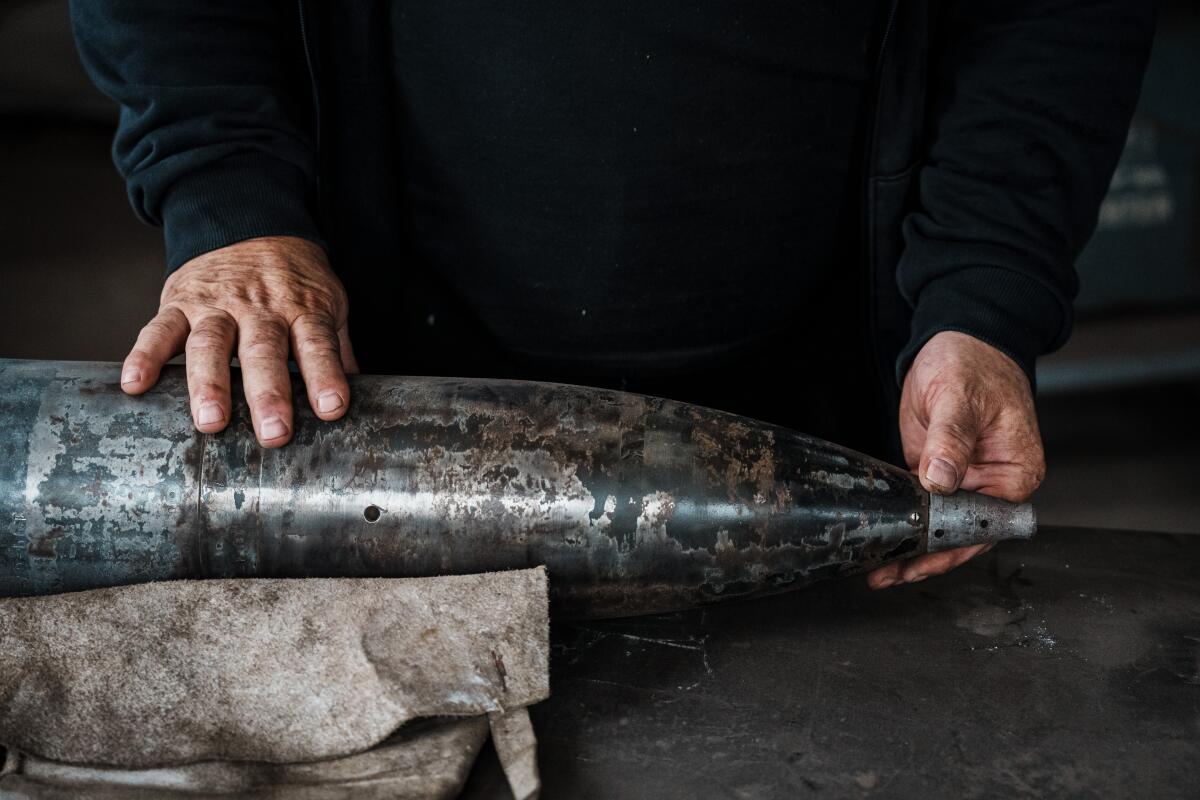
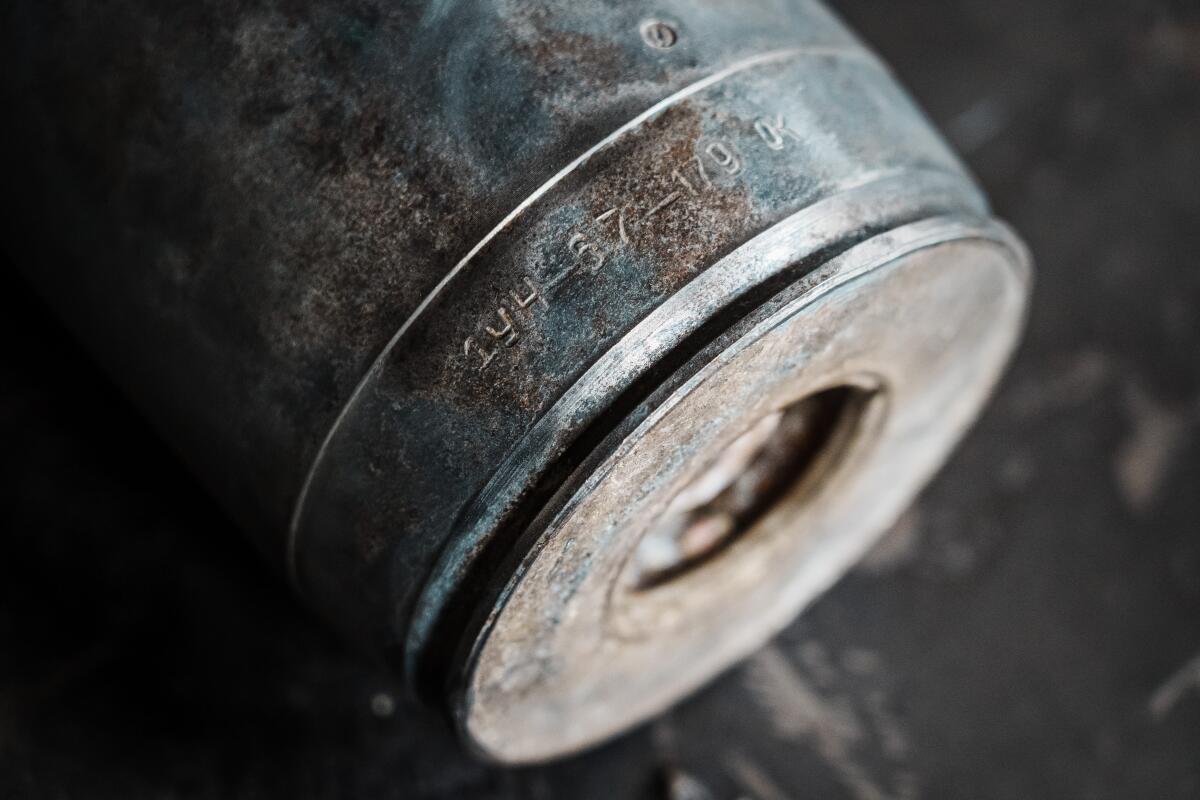
A close-up of details of spent munition collected from the war. (Marcus Yam / Los Angeles Times)
Nearly a year and a half after the full-scale Russian invasion, the war remains a supply line of sorts for Reva, a never-ending tide tossing up new flotsam and jetsam. Odesa ‚ÄĒ a graceful old imperial capital known as the ‚Äújewel of the Black Sea‚ÄĚ ‚ÄĒ had been largely spared the direct hits that have ravaged many other major population centers, but that too has changed.
In July, almost immediately after Russia withdrew from an internationally backed initiative that allowed for vital shipments of Ukrainian grain to transit the Black Sea, Odesa’s baroque city center, a UNESCO-designated endangered site, was hammered for the first time by Russian missile strikes.
The ongoing bombardment shattered historic structures including museums, villas and the venerable House of Scientists, situated in a 19th century palace that once belonged to Russia’s aristocratic Tolstoy family. From his ninth-floor apartment, Reva witnessed the strike that wrecked the Cathedral of the Transfiguration, Odesa’s oldest and largest.
In a week, Russia has fired dozens of missiles and drones at the Odesa region of Ukraine, hitting the historic city center that had been largely spared in the war.
The recent rain of projectiles ‚ÄĒ ship-to-shore missiles, drones and cruise missiles ‚ÄĒ galvanized rage against the Russian invaders. The city‚Äôs mayor, Gennadiy Trukhanov, who before the war had been considered strongly pro-Moscow, released a video message railing against the Kremlin.
‚ÄúIf only you knew how much Odesa hates you,‚ÄĚ he seethed. ‚ÄúYou must hardly know us Odesans. You will not break us; you will only make us angrier.‚ÄĚ
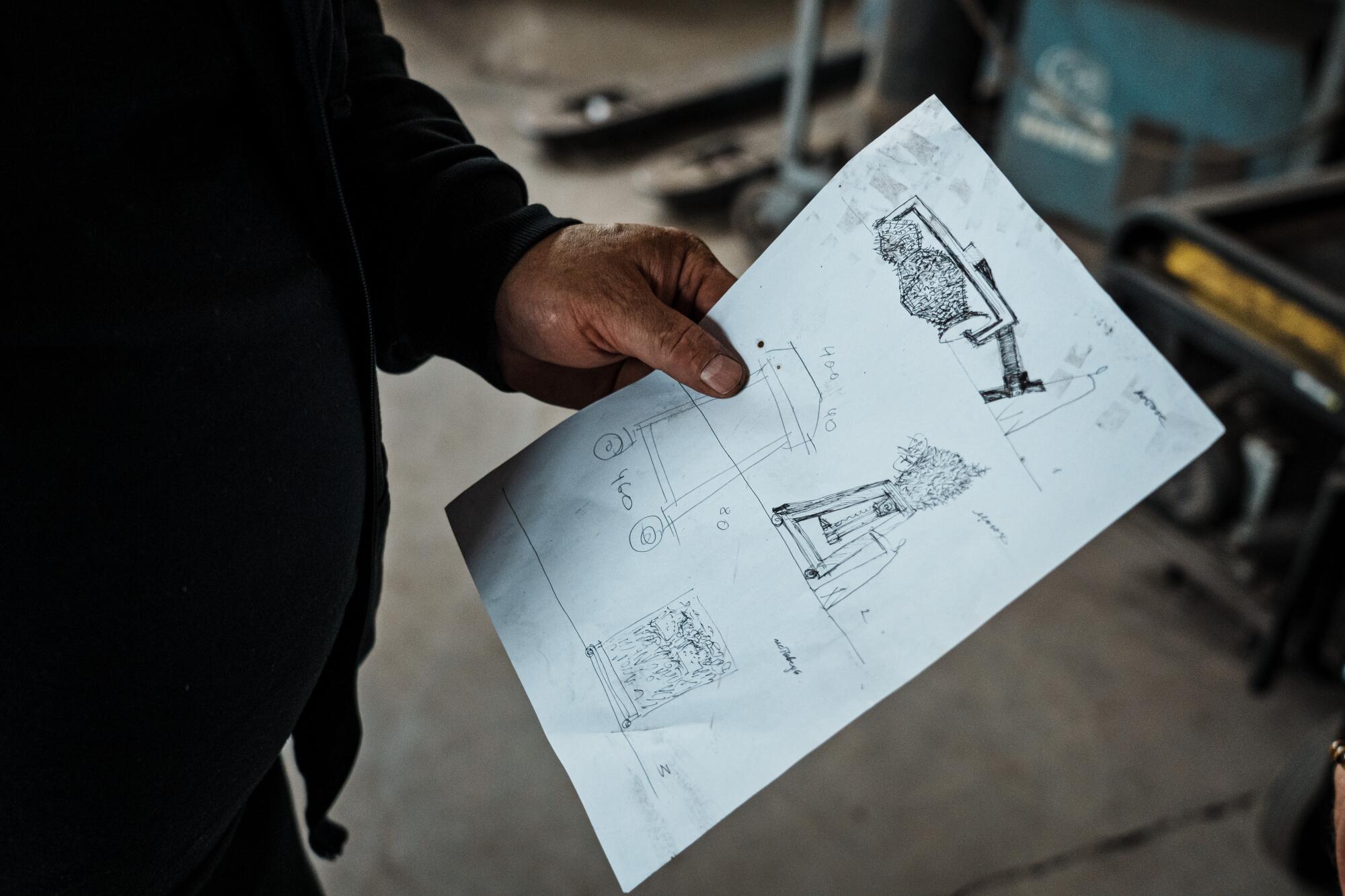
In his art, Reva channels that fury, fiery as the burst of sparks that fly from his welding torch.
‚ÄúArt is a tool that freezes time,‚ÄĚ he said. ‚ÄúI have to create commemorations of this tragedy.‚ÄĚ
One of the most monumental pieces in his wartime oeuvre is a bristling mass of metal shards, rising 12 feet in height, that he says is meant to embody Moloch, a Canaanite god appeased only by gruesome human sacrifice. It is in the rough shape of a bear, the unofficial symbol of Russia.
‚ÄúWe are hostages, all of us, of one man and his sick ambitions,‚ÄĚ Reva said, referring to Russian President Vladimir Putin.
The Moloch sculpture, currently in Berlin, is the centerpiece of a planned exhibition titled, with cold outrage, ‚ÄúRusskiy Mir.‚ÄĚ The term, meaning Russian world, is used by Putin and his backers to justify dominion over sovereign lands they nonetheless consider rightfully part of Russia.
‚ÄėArt is a tool that freezes time. I have to create commemorations of this tragedy.‚Äô
— Mikhail Reva
Odesa, molded by the Russian empress Catherine the Great into an international seaport in the 18th century, has always had complicated ties with its imperial past, especially since Ukraine’s independence more than three decades ago following the collapse of the Soviet Union. An imposing statue of Catherine held pride of place near the city’s iconic Italianate landmark, the Potemkin Stairs, until Ukrainian authorities removed it late last year.
Reva readily acknowledges himself to be a product of the Russian world. Born in 1960, when Ukraine was still a Soviet republic, he is a native of the Crimean peninsula that was seized and annexed by Putin nearly nine years ago. He spent formative years at an elite art school in St. Petersburg, a city he expects never to see again.
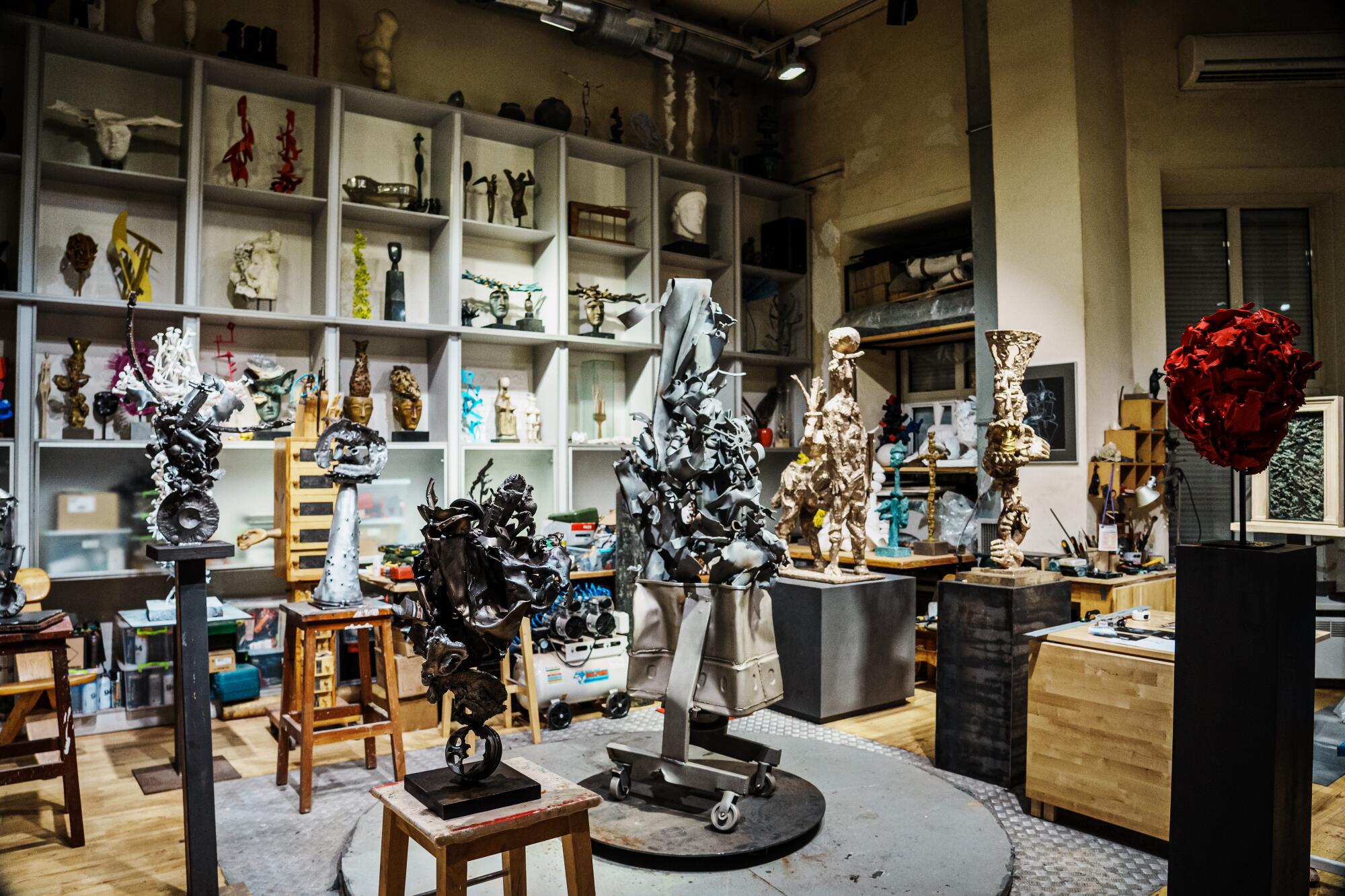
His career began with some state-sponsored artistic commissions for works he now describes as false and soulless. More than 20 years ago, at the behest of Ukraine‚Äôs Kremlin-allied government, he crafted a small silver sundial that was presented to Putin ‚ÄĒ then considered by many in the West as a potential reformist ‚ÄĒ who reportedly kept it on his desk.
Like many Odesans of his generation, Reva uses Russian language in his daily life. The switch to Ukrainian, an impulse broadly followed across much of the country, is easier for younger people, he said. His grown daughter, an artist who lives in Kyiv, now speaks almost exclusively in Ukrainian, he added with pride.
Many residents of Ukraine’s capital are sleepless as a new Russian air campaign terrorizes them with a barrage of drones and other aerial weapons.
In a war that has left almost no family here untouched, his work draws on private sorrow. Soon after the invasion, he spirited his elderly mother, Valentina, out of the country to safety. But she died at 89, after a rapid decline he blames on the stress of forced relocation.
‚ÄúWhen all this began, I looked into my mother‚Äôs eyes, and I saw the fear of that little girl who had survived the Second World War,‚ÄĚ he said. ‚ÄúThis war took from me the most precious thing I had. If she could have stayed here in Odesa, she would be alive today.‚ÄĚ
Reva‚Äôs Odesa roots, he said, are anchored by family ties, particularly his recollections of his mother and his sea-captain father ‚ÄĒ ‚Äúthe one who taught me to look to the mysterious horizon.‚ÄĚ He describes his ancestry as mirroring the city‚Äôs rich traditional cosmopolitan mix of Jewish, Greek, and Crimean Tatar.
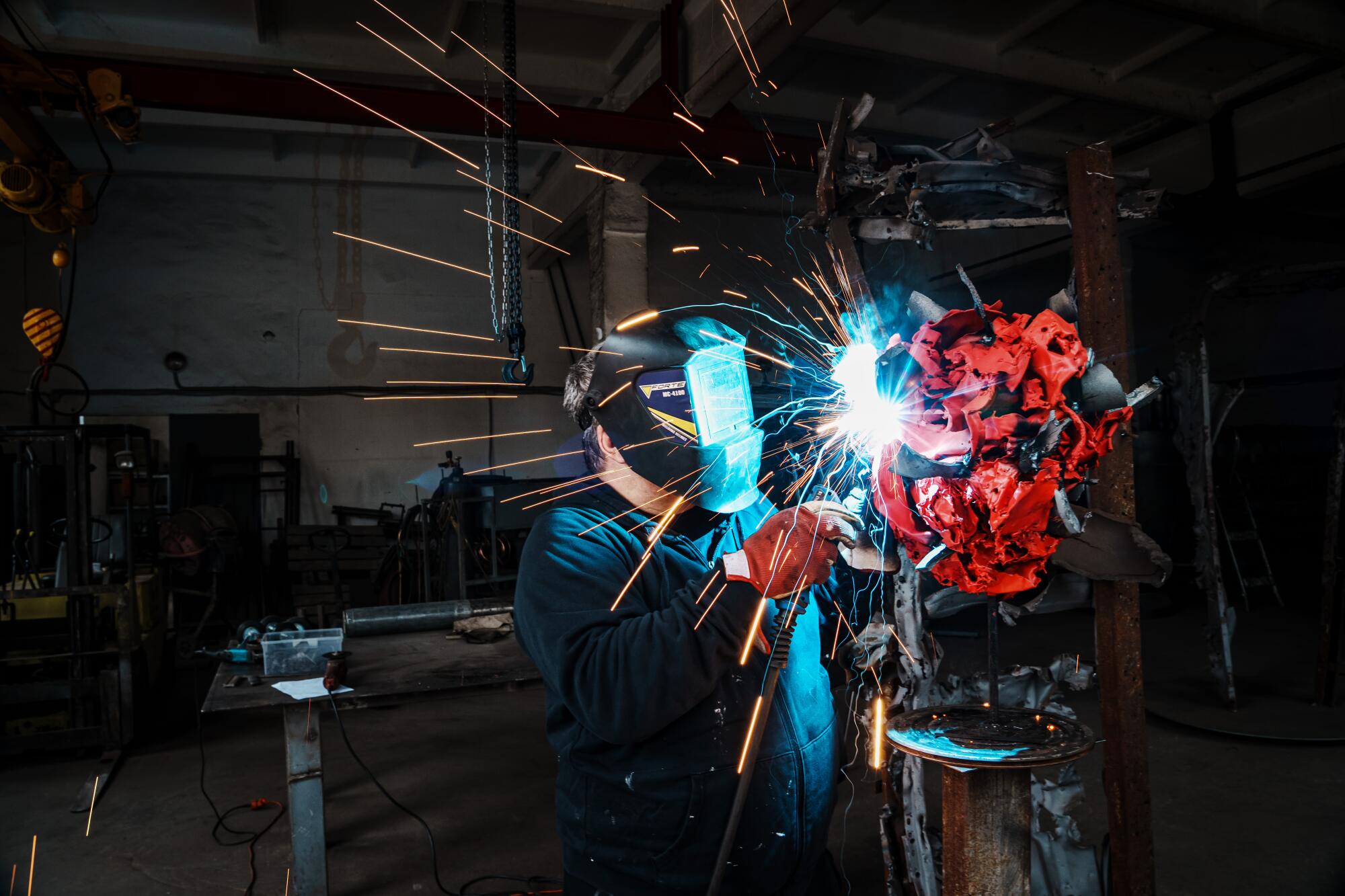
‚ÄúIn all the world, there is no other place like Odesa,‚ÄĚ he said.
The city in turn has long embraced him. Visitors and locals alike snap selfies with his best-known works, which often draw on local lore. On a main boulevard, people clamber to perch atop an outsize chair ‚ÄĒ a nod to a Soviet-era satirical novel, authored by a pair of Odesan writers, about the unseemly scramble for a lost inheritance of jewels hidden in a dining-room set.
Russian President Vladimir Putin’s KGB years in East Germany offer a window into his crackdown on protests, war on Ukraine and yearning for empire.
Another much-loved peacetime installation, this one on the seaside ‚ÄĒ a large, ornate door frame modeled on one from an old Odesa mansion ‚ÄĒ has taken on menacing new meaning: The open portal frames the Black Sea, from which Russian warships now fire missiles at the city.
Reva said he was confident that the soul of Odesa ‚ÄĒ insouciant, sardonic, seductive ‚ÄĒ would survive the war. But he sometimes wondered, he said, whether he would ever find a way back to what he calls the romanticism and optimism of his previous works. He is already pondering designs for large-scale memorials in places like Bucha.
‚ÄúI‚Äôm not one for beating swords into ploughshares,‚ÄĚ he said, shaking his head. ‚ÄúMaybe there will be a time for that someday. But not now.‚ÄĚ
More to Read
Sign up for Essential California
The most important California stories and recommendations in your inbox every morning.
You may occasionally receive promotional content from the Los Angeles Times.
